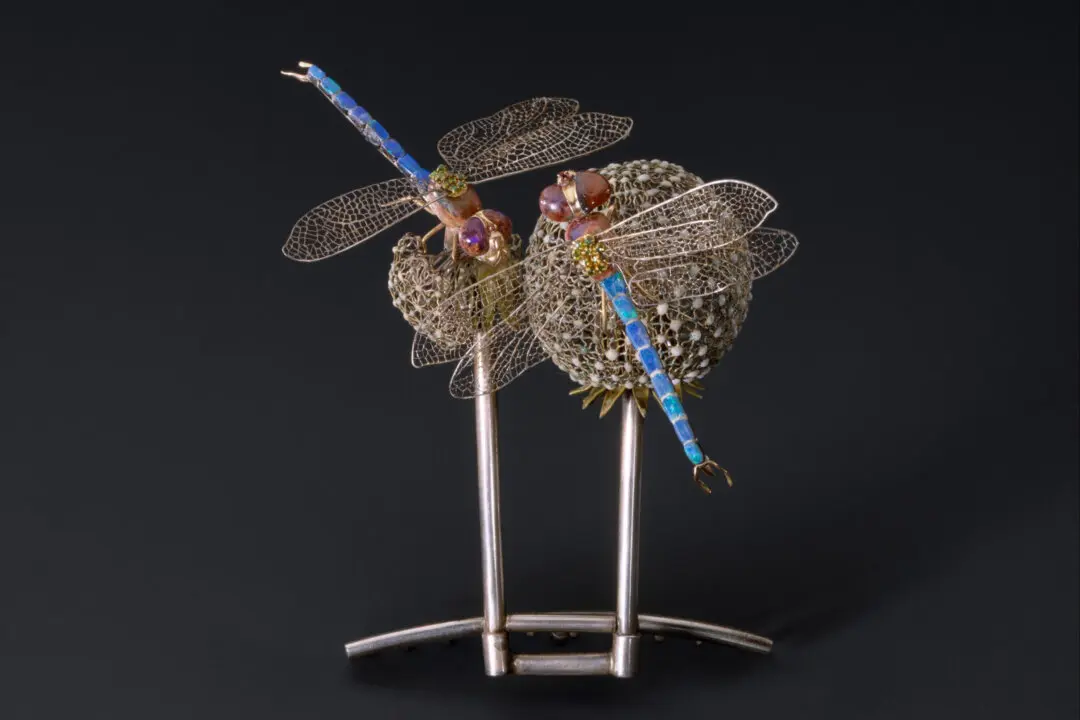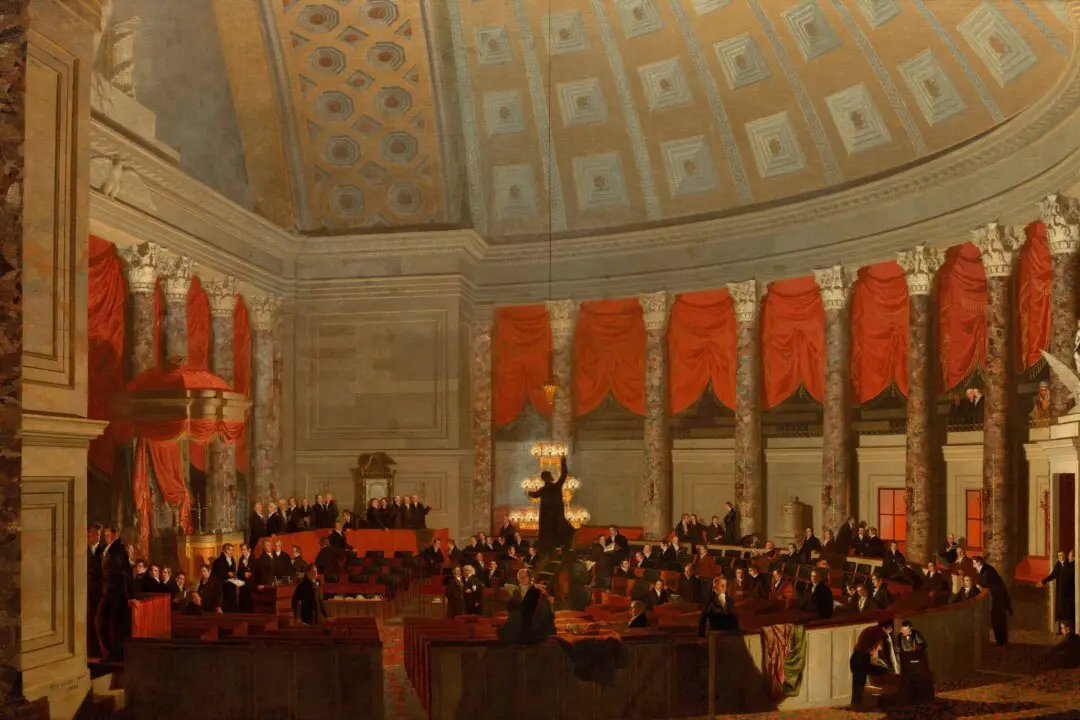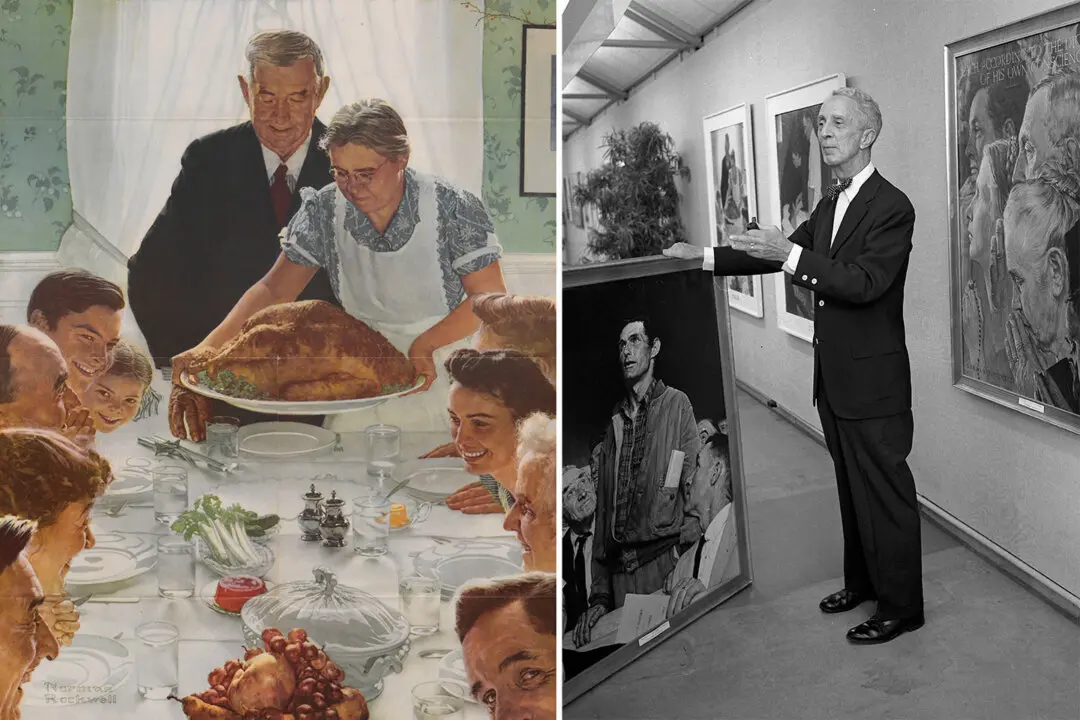Louis Comfort Tiffany’s circa 1904 hair ornament at the Metropolitan Museum of Art is a “monumental” masterpiece. Only 3 1/4 inches tall, it depicts two dragonflies alight on dandelion seed balls. The piece’s epic scope derives from its inventive artistry, subject, and materials. Housed in the storied Havemeyer collection, its existence was only known to scholars from archival photographs. The artwork’s fortuitous rediscovery by a Met curator led to its landing at the museum.
A Jeweled Heritage
Tiffany (1848–1933) was a virtuoso in nearly every decorative arts medium. His earliest artistic efforts were as a painter, but today he is best known for leaded-glass windows and floral lampshades. The prevailing themes throughout his oeuvre are nature and the exploration of light and color.Jewelry was one of the last categories in which Tiffany experimented, though making it ran in his veins. His father was the founder of the famed Tiffany & Co.





